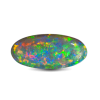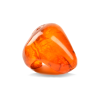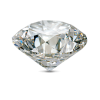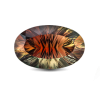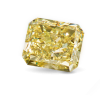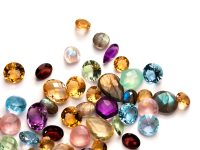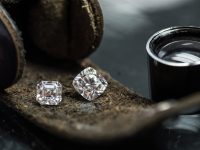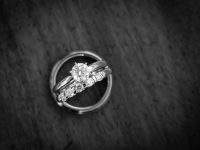Turquoise
Azure sky, robin’s egg blue: Vivid shades of turquoise define the color that’s named after this gem.
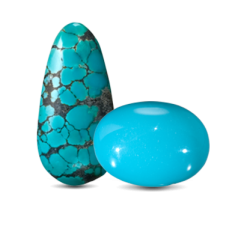
Turquoise Description
Turquoise is found in only a few places on earth: dry and barren regions where acidic, copper-rich groundwater seeps downward and reacts with minerals that contain phosphorus and aluminum. The result of this sedimentary process is a porous, semitranslucent to opaque compound of hydrated copper and aluminum phosphate.
Turquoise is a prime example of an opaque colored stone that can be marketed both as a gem for jewelry and as an ornamental material.
Turquoise might lack the sparkle and clarity of transparent colored gemstones like ruby, emerald, and sapphire, but its multi-layered history and soul-satisfying color make it a desirable gem. Its color can range from dull greens to grass greens to a bright, medium-toned, sky blue. People value turquoise highly for its combination of ancient heritage and unforgettable color.
The traditional source for the top color, sometimes described as robin’s-egg blue or sky blue, is the Nishapur district of Iran, the country formerly known as Persia.
Gemstone Details
- Mineral: Turquoise
- Chemistry: CuAl6(PO4)4 (OH)8.5H2O
- Color: Blue to green
- Refractive Index: 1.610 to 1.650
- Birefringence: Not detectable
- Specific Gravity: 2.76 (+0.14, -0.36)
- Mohs Hardness: 5 to 6
Birthstones and Anniversaries
Turquoise is the traditional birthstone for the month of December and the gem of the 11th anniversary.
Turquoise Gemstone as rough
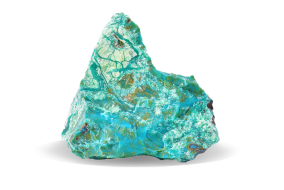
So, quite often, you’ll hear people in the trade call turquoise of this beautiful color “Persian blue,” whether or not it was actually mined in Iran.
Top-quality turquoise has inspired designers to create elegant jewelry. It’s most often cut into cabochons, but it might also be cut into beads or flat pieces for inlays.
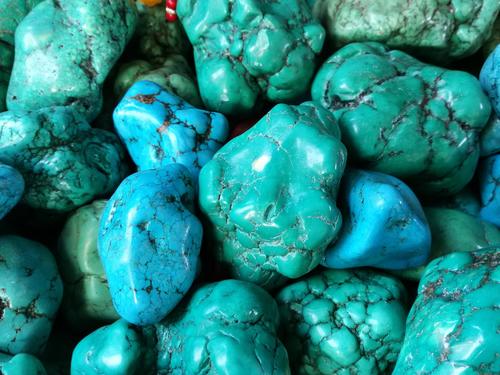
Although much turquoise jewelry is sleek and modern, many US consumers are familiar with the traditional jewelry of Native American peoples such as the Pueblo, Hopi, Zuni, and Navajo. People interested in Native American arts and crafts frequently collect this stylized silver jewelry.
Turquoise is relatively soft, so it’s ideal for carving. Artists in Europe, Asia, the Middle East, and the Americas choose turquoise as a medium for carved jewelry and art objects. It’s often fashioned into talismans with Native American significance, such as bird and animal carvings, called fetishes.
Turquoise owes its texture to its structure and composition. It’s an aggregate of microscopic crystals that form a solid mass. If the crystals are packed closely together, the material is less porous, so it has a finer texture. Fine-textured turquoise has an attractive, waxy luster when it’s polished. Turquoise with a less-dense crystal structure has higher porosity and coarser texture, resulting in a dull luster when it’s polished.
Porosity and texture don’t just affect appearance: They also affect durability. Turquoise is fairly soft—it ranks 5 to 6 on the Mohs scale. Turquoise with a coarse texture might have poor toughness, too. Samples with finer texture have fair to good toughness.
In turquoise, low porosity and fine texture are more valuable than high porosity and coarse texture. Coarse, porous stones are usually treated to make them smoother, shinier, and more marketable.
Turquoise deposits usually form in iron-rich limonite or sandstone. Limonite creates dark brown markings in turquoise, while sandstone creates tan markings. These markings are remnants of the host rock within the turquoise, and can resemble splotches or veins. They’re called matrix.
Manufacturers try to fashion turquoise so that no matrix is visible, but sometimes it’s unavoidable.
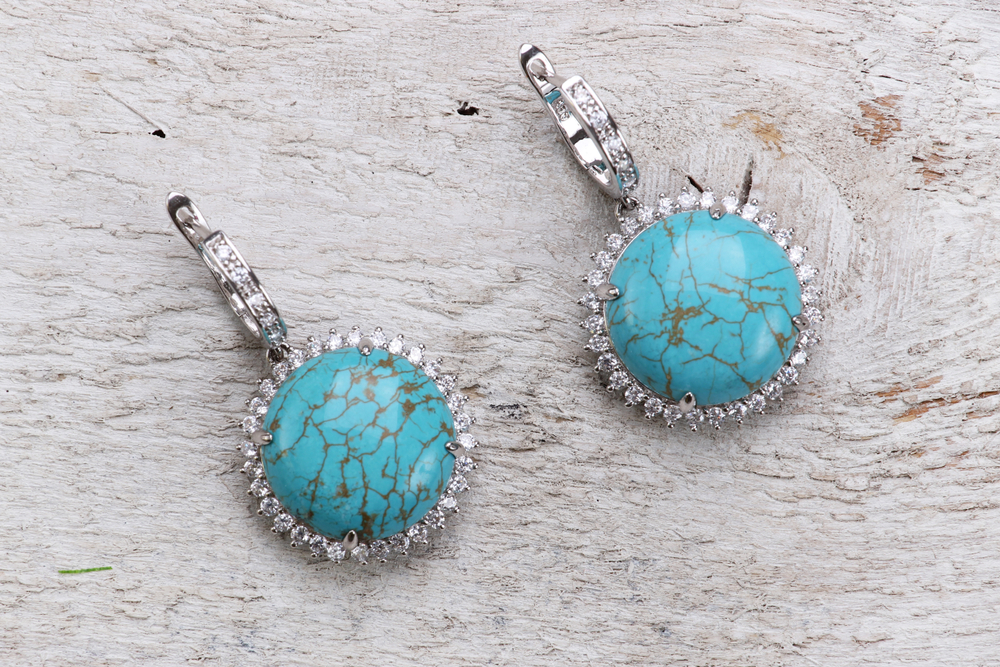
Small amounts of turquoise might be scattered through the host rock in such a way that the rough material can’t yield any cut specimens large enough to fashion into gems without including some matrix.
The presence of matrix can lower the value of turquoise, but that doesn’t mean turquoise with matrix is worthless or unmarketable. Some buyers actually prefer the presence of matrix in fashioned turquoise if its effect is attractive and balanced.
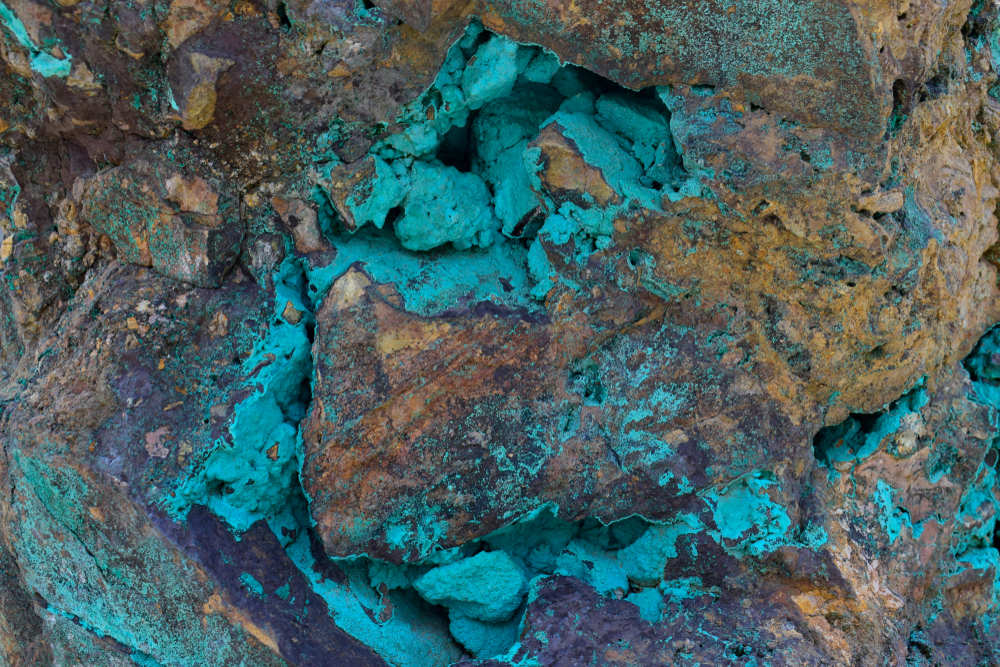
This is especially true if it’s a type of turquoise known in the trade as spiderweb turquoise. It contains matrix in thin, delicate, web-like patterns across the face of the gemstone. The patterns provide a dark contrast to the gem’s bright blue.
In the market for top-quality turquoise, stones with no matrix at all command the highest prices. Gems with attractive spiderweb matrix rank second in value.
Turquoise History and Lore
Turquoise is one of the world’s most ancient gems. Archaeological excavations revealed that the rulers of ancient Egypt adorned themselves with turquoise jewelry, and Chinese artisans were carving it more than 3,000 years ago. Turquoise is the national gem of Tibet, and has long been considered a stone that guarantees health, good fortune, and protection from evil.
The gem’s name comes from the French expression pierre tourques, or “Turkish stone.” The name, which originated in the thirteenth century, reflects the fact that the material probably first arrived in Europe from Turkish sources.

Turquoise was a ceremonial gem and a medium of exchange for Native American tribes in the southwestern US. They also used it in their jewelry and amulets. The Apaches believed that turquoise attached to a bow or firearm increased a hunter’s or warrior’s accuracy.
Turquoise is plentiful and available in a wide range of sizes. It’s used for beads, cabochons, carvings, and inlays. Although well known to consumers, its popularity in the mainstream jewelry industry comes and goes. The biggest and most permanent market is in the American Southwest. It’s also popular elsewhere, among customers who are captivated by that region’s mystery and romance, as well as by the blue of its skies.
Facts about Turquoise Gemstone
SPIDERWEB
The spiderweb of veins that appear in turquoise are matrix: evidence of the surrounding rock.
LEGACY
A legacy of turquoise appreciation spans the globe, from ancient Egypt to Mesoamerica to China.
COPPER
Turquoise is colored by copper, which creates some of the most vivid blues and greens in gems.
Quality Factors
COLOUR
The even blue color of this cabochon would be called Persian blue in the trade.
CLARITY
These free-form turquoise cabochons show a typical matrix pattern.
CUT
Although turquoise is usually cut into beads and cabochons, it can also be carved.
CARAT WEIGHT
Cutters work around large areas of matrix to yield pieces of evenly colored turquoise.


